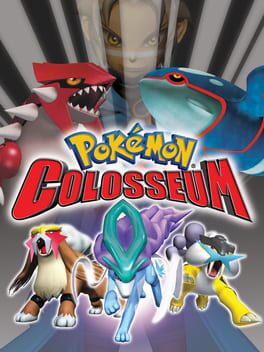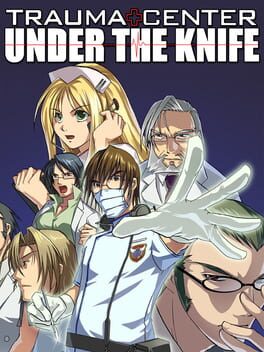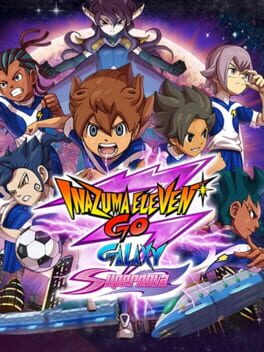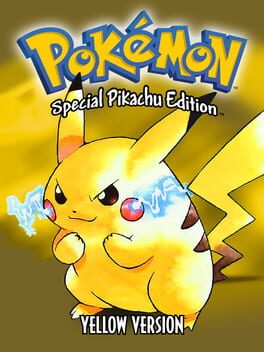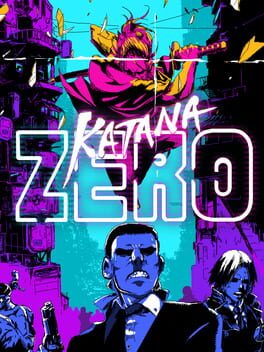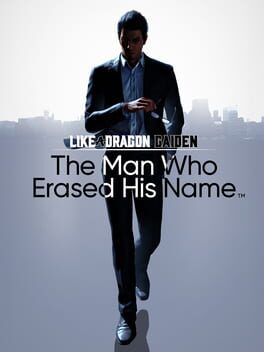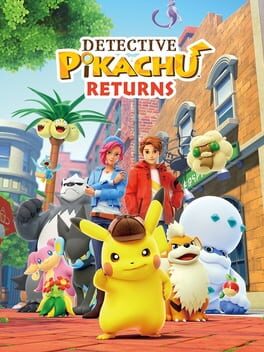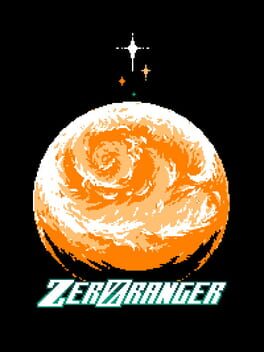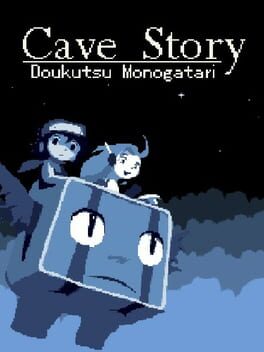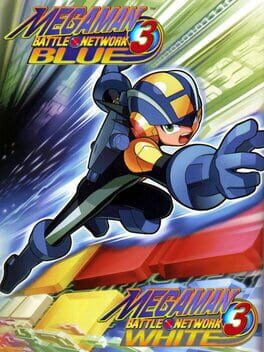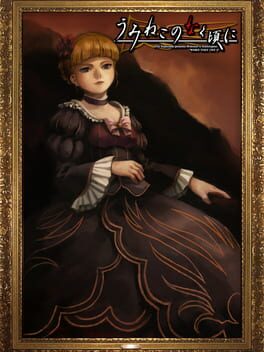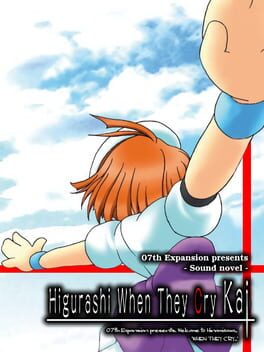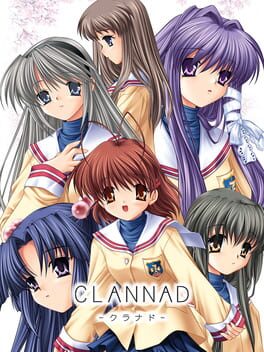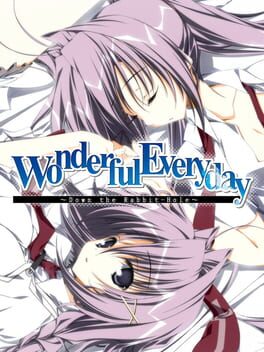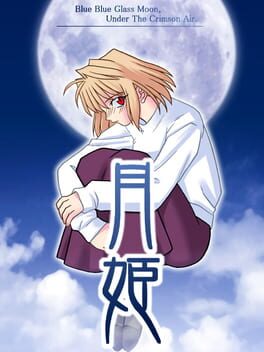santa3
59 reviews liked by santa3
Pokémon Colosseum
2003
Let’s get this out of the way immediately: Pokemon Colosseum is a game for veterans and die-hard fans of the franchise. If you do not enjoy Pokemon battling, and are into Pokemon for the interaction elsewhere such as catching wild Pokemon, participating in contests/side-events, or feeding them treats, then this is not the game for you. Furthermore, this game is quite difficult, even for experienced battlers, and will very much test your knowledge of Gen 3 Pokemon mechanics and doubles battles. With that said, there is both a lot to be loved regarding this theoretical departure from typical “10-year-old raises up a team of legends and conquers the gym and league” style of Pokemon games regarding its challenge, and a lot to be desired regarding its execution.
The first noticeable difference between Pokemon Colosseum and the mainline series is the ability (and in fact, need) to catch Pokemon exclusively in trainer battles. Here’s how it’s justified in-universe; you’re a rogue Team Snagem member who swiped Snagem’s old Snag Machine (that gave them the ability to snatch other trainers’ Pokemon), and it’s up to you to retrieve Shadow Pokemon whose hearts have been locked up by nefarious experimentation and thwart this villainous organization that’s spread its tendrils across the barren wastelands of Orre and save this forsaken region once and for all. This need to “save” the Shadow Pokemon and add them to your team is further compounded by two other factors. Firstly, Orre is, as previously mentioned, generally desolate and has no fertile environments to support wild Pokemon. Secondly, your starting team of Espeon and Umbreon is not the greatest; Espeon is powerful but lacking in defense and coverage, and Umbreon is bad unless you want to spend an eternity stalling in battle and spending all your earnings on health regeneration items.
In theory, this makes Colosseum’s lean towards battling quite exciting; you now have to factor in weakening opponents’ Shadow Pokemon to properly catch them, alongside usual victory strategies. In practice, however, this is kind of a pain. Part of this is due to the second noticeable difference between Colosseum and the main series; all fights are double battles, and you have to account for the other non-Shadow Pokemon on the opponent’s side. As a result, there is a very good chance that the combat ready Pokemon with strong STAB attacks and defensive moves are often not the same as those ideal for catching, with weaker moves to whittle down HP and status moves like Sleep Powder that are great for increasing catch rate but become a little impractical to constantly spam in a double battle due to outright attacks saving time and mitigating damage. Additionally, Shadow Pokemon love to spam the one guaranteed move they will have: Shadow Rush, a typeless attack that will always deal significant recoil to the user. This tendency goes against any intentions of catching Shadow Pokemon, and you’ll often find Shadow Pokemon ending their own lives from recoil before you get enough turns to snag them with your own balls. Also, since this is still a trainer battle, there’s a good chance that if you knock the Shadow Pokemon out, you won’t be able to get a rematch to try to catch the Pokemon again until quite a ways later. So, be prepared to spend plenty of money on Poke Balls and a lot of time save scumming to catch the harder and more coveted Shadow Pokemon, such as the Legendary Beasts.
You’re not out of the woods yet though, because here’s where Pokemon’s weaknesses start to come into play. I’ve always said that Pokemon has two major weaknesses: excess RNG, and excess grinding. Both of these issues are unfortunately exacerbated because of the need to purify Shadow Pokemon.
Shadow Pokemon have their hearts locked, because of the aforementioned experimentation, and in theory are supposed to be “stronger” according to the big bad. In reality, they suck, because their moveset isn’t fully unlocked (in fact, your Shadow Pokemon start with only Shadow Rush and will unlock more moves as their gauge drains) nor can they level up until properly purified. As a result, you must send them out into battle and spend time with them to lower their gauge, sort of similar to how Pokemon happiness is built up in the main series. Here’s the kicker: every now and then, Shadow Pokemon will enter “Hyper Mode,” where they will suddenly skip one turn and then become aggressive and disobedient. There’s supposed to be a risk vs reward here; the reward is that any attack successfully launched by Hyper Mode Shadow Pokemon will automatically score critical hits (double damage). However, the risk often wins here, and if so, your Pokemon will waste time attempting to attack your protagonist or just go back into its ball and force you to call out another Pokemon. As a result, you have to waste even more time using Call on your Shadow Pokemon’s turn to snap them out of it and lower the gauge. So, sending them out into battle can very quickly lower that Shadow Gauge to speed up purification, but it’s generally a bad idea to do this in mainline story mode battles where there are real stakes and opponents can quickly end you.
This is where grinding kicks in. As is, grinding is considered necessary in Pokemon Colosseum, because moving onto the next area usually comes along with sharp level increases of 3-5 levels; unless you’re just using the same two or three Pokemon, the natural EXP gain from story battles will not be enough. You’ve got three methods to choose from. Method one is to find previously fought trainers in dungeons and rematch them. It may or may not be appealing depending on how far you are from the nearest heal station/PC, and you’ll end up wasting time leaving and entering areas to refresh trainers anyways. Method two is to enter individual colosseums and fight four consecutive trainers arena style; you’ll also win a TM for your first four wins per colosseum and a nice cash prize. Unfortunately, Shadow Pokemon are banned here. Method three (and my preferred method) is to farm Mount Battle’s lower areas (more or less a stream of ten consecutive fights for Battle Coupons, used to redeem TMs and held items) for low-stakes fights and easy, albeit somewhat mindless XP. You won’t unlock this until about halfway through the game, but it’s definitely the most efficient and least risky method to work with. Regardless, be prepared to spend a lot of time grinding for everything: save scumming for catching Shadow mons, cash grinding for Poke Balls/TMs/potions, EXP grinding to scale up, and Shadow Gauge grinding to purify mons.
I think that actually sums up the main weakness of Colosseum; in theory, it adds a ton of wrinkles to shake up the formula and introduce difficulty, but in practice, this just adds tons of padding to the game. I’ve already mentioned the necessary evil of excess grinding as a form of padding as well as the RNG further wasting turns in battle, but there are even more time-wasters elsewhere. Battle animations are a huge culprit; there are introductory cutscenes to introduce the opponent and the setting, spawning animations whenever Pokemon come out (for both your own and the opponents’), attack and being attacked animations for every move, damage animations from status/weather, and a nearly ten-second long Shadow Pokemon identifier cutscene if one comes out. Oh, and if a multi target move like Surf or Earthquake is used, every individual Pokemon that is hit has its own dedicated stumbling animation. This problem is further compounded by Colosseum’s supposed strength, its lean towards Pokemon Battles. There are trainers everywhere, often within several feet of one another. Some of them will even automatically spot you in their line of sight and rematch after you’ve left and returned to the area. You’re also going to be taking plenty of damage or at the very least, using a ton of PP that has to be restored with healing machines and PCs, so be prepared to backtrack plenty. To put this all into perspective, the introductory dungeon in Pyrite Town can take several hours. As it stands, I would not be exaggerating if I said that half of the time in-game is spent watching battle animations, and it is a shame that the mostly empty and circuitous corridors of the in-game dungeons lend very little to environmental interactions outside of battling more trainers.
Despite how much I’ve criticized Colosseum due to the copious amounts of time wasted in-game… I actually enjoyed most of my time spent. Colosseum’s difficulty is its saving grace; opposing trainers are ruthless in exploiting Gen 3’s battle mechanics to knock you down a few pegs and hold you accountable. In part, the exclusive double battles set up Colosseum for success; you have to fully utilize set-up and defensive options (such as weather moves like Rain Dance and damage mitigation like Reflect), target switching based off of type advantages/disadvantages, item usage (which becomes much more committal in a Double Battle; you can’t take back the item and you have to determine which Pokemon loses its turn from item usage), and careful in-battle swapping of Pokemon versus sacrificing them when there are no in-between turns allowed to just switch your Pokemon on the fly. You’ll constantly need to adapt and exploit these mechanics yourself, because these opponents tend to bring their A-game for proper doubles strats; for example, one boss will spam Earthquake while using Protect on the other to relentlessly hit both of your Pokemon, another might abuse rain to activate Swift Swim (for doubled speed) and doubling the damage of Water-type attacks, and so on so forth.
I’ll also bring back to attention the limited Pokemon pool of Colosseum; there are at most 52 usable Pokemon in-game, and that is a good thing. As mentioned prior, you’ll absolutely need an expanded team because Espeon lacks options to deal with Pokemon that are strong against Psychics, and Umbreon is extremely mid. That said, most of the selection in-game isn’t too great either, but it’s certainly exotic; I believe this is due to Nintendo developing Colosseum (and its successor, XD) as opportunities to catch non Hoenn and Kanto Pokemon (from Ruby/Sapphire Emerald and LeafGreen/FireRed respectively) and transfer them to the main games when purified. As such, while the actual pool early game isn’t ideal, (in fact, I would label some such as Slugma and Furret as “garbo-mons”), there’s actually a lot of utility to each Pokemon when the options are so limited. “Weaker” Pokemon such as Skiploom provide status attack options (i.e. Sleep Powder) to make catching easier, or can provide defensive type utility (such as Misdreavus, the only catchable Ghost-Type) in blocking common attacks. There’s also a part of me that finds it extremely funny and satisfying to take down high-level and evolved Pokemon with Dunsparce’s hax-ridden Serene Grace or Gen 3 Qwilfish’s subpar base 55 Special Attack stat. These early game struggles make the end-game push that much more gratifying, from finally evolving your previously underwhelming early game mons to catching some valuable “viable” mons such as Skarmory, while gaining the necessary cash to further augment them with stat boosting drinks and TMs for better attacks. For all my complaints, Colosseum at least gives you the exact tools you need to success to excel in battling, and nothing more because they don’t need to. You know what they say; limitation can often lead to innovation, and struggle can often lead to satisfaction.
While Pokemon Colosseum still suffers from all of the shortcomings of your usual Pokemon game, it was somehow still a great fit for me, finally feeling challenged in a non rom-hack setting with battles aplenty. I won’t deny that my inner edgelord enjoyed this either, thanks to the underlying plotline of a spiky-haired 17 year old former criminal turned silent protagonist on his motor hovercraft destroying scores of trained and technical gritty criminals yelling “yOuR rEsIsTaNcE iS fUtIlE!!!!111!,” as cheesy as the whole affair felt while bodying Chaser Kai for the 22nd time with my Stantler. It’s certainly not for everyone, but if you’re feeling a bit let down from cruising through the mainline Pokemon games and are prepared to invest many hours putting your knowledge of Gen 3 mechanics to the test, then definitely give Colosseum a shot.
The first noticeable difference between Pokemon Colosseum and the mainline series is the ability (and in fact, need) to catch Pokemon exclusively in trainer battles. Here’s how it’s justified in-universe; you’re a rogue Team Snagem member who swiped Snagem’s old Snag Machine (that gave them the ability to snatch other trainers’ Pokemon), and it’s up to you to retrieve Shadow Pokemon whose hearts have been locked up by nefarious experimentation and thwart this villainous organization that’s spread its tendrils across the barren wastelands of Orre and save this forsaken region once and for all. This need to “save” the Shadow Pokemon and add them to your team is further compounded by two other factors. Firstly, Orre is, as previously mentioned, generally desolate and has no fertile environments to support wild Pokemon. Secondly, your starting team of Espeon and Umbreon is not the greatest; Espeon is powerful but lacking in defense and coverage, and Umbreon is bad unless you want to spend an eternity stalling in battle and spending all your earnings on health regeneration items.
In theory, this makes Colosseum’s lean towards battling quite exciting; you now have to factor in weakening opponents’ Shadow Pokemon to properly catch them, alongside usual victory strategies. In practice, however, this is kind of a pain. Part of this is due to the second noticeable difference between Colosseum and the main series; all fights are double battles, and you have to account for the other non-Shadow Pokemon on the opponent’s side. As a result, there is a very good chance that the combat ready Pokemon with strong STAB attacks and defensive moves are often not the same as those ideal for catching, with weaker moves to whittle down HP and status moves like Sleep Powder that are great for increasing catch rate but become a little impractical to constantly spam in a double battle due to outright attacks saving time and mitigating damage. Additionally, Shadow Pokemon love to spam the one guaranteed move they will have: Shadow Rush, a typeless attack that will always deal significant recoil to the user. This tendency goes against any intentions of catching Shadow Pokemon, and you’ll often find Shadow Pokemon ending their own lives from recoil before you get enough turns to snag them with your own balls. Also, since this is still a trainer battle, there’s a good chance that if you knock the Shadow Pokemon out, you won’t be able to get a rematch to try to catch the Pokemon again until quite a ways later. So, be prepared to spend plenty of money on Poke Balls and a lot of time save scumming to catch the harder and more coveted Shadow Pokemon, such as the Legendary Beasts.
You’re not out of the woods yet though, because here’s where Pokemon’s weaknesses start to come into play. I’ve always said that Pokemon has two major weaknesses: excess RNG, and excess grinding. Both of these issues are unfortunately exacerbated because of the need to purify Shadow Pokemon.
Shadow Pokemon have their hearts locked, because of the aforementioned experimentation, and in theory are supposed to be “stronger” according to the big bad. In reality, they suck, because their moveset isn’t fully unlocked (in fact, your Shadow Pokemon start with only Shadow Rush and will unlock more moves as their gauge drains) nor can they level up until properly purified. As a result, you must send them out into battle and spend time with them to lower their gauge, sort of similar to how Pokemon happiness is built up in the main series. Here’s the kicker: every now and then, Shadow Pokemon will enter “Hyper Mode,” where they will suddenly skip one turn and then become aggressive and disobedient. There’s supposed to be a risk vs reward here; the reward is that any attack successfully launched by Hyper Mode Shadow Pokemon will automatically score critical hits (double damage). However, the risk often wins here, and if so, your Pokemon will waste time attempting to attack your protagonist or just go back into its ball and force you to call out another Pokemon. As a result, you have to waste even more time using Call on your Shadow Pokemon’s turn to snap them out of it and lower the gauge. So, sending them out into battle can very quickly lower that Shadow Gauge to speed up purification, but it’s generally a bad idea to do this in mainline story mode battles where there are real stakes and opponents can quickly end you.
This is where grinding kicks in. As is, grinding is considered necessary in Pokemon Colosseum, because moving onto the next area usually comes along with sharp level increases of 3-5 levels; unless you’re just using the same two or three Pokemon, the natural EXP gain from story battles will not be enough. You’ve got three methods to choose from. Method one is to find previously fought trainers in dungeons and rematch them. It may or may not be appealing depending on how far you are from the nearest heal station/PC, and you’ll end up wasting time leaving and entering areas to refresh trainers anyways. Method two is to enter individual colosseums and fight four consecutive trainers arena style; you’ll also win a TM for your first four wins per colosseum and a nice cash prize. Unfortunately, Shadow Pokemon are banned here. Method three (and my preferred method) is to farm Mount Battle’s lower areas (more or less a stream of ten consecutive fights for Battle Coupons, used to redeem TMs and held items) for low-stakes fights and easy, albeit somewhat mindless XP. You won’t unlock this until about halfway through the game, but it’s definitely the most efficient and least risky method to work with. Regardless, be prepared to spend a lot of time grinding for everything: save scumming for catching Shadow mons, cash grinding for Poke Balls/TMs/potions, EXP grinding to scale up, and Shadow Gauge grinding to purify mons.
I think that actually sums up the main weakness of Colosseum; in theory, it adds a ton of wrinkles to shake up the formula and introduce difficulty, but in practice, this just adds tons of padding to the game. I’ve already mentioned the necessary evil of excess grinding as a form of padding as well as the RNG further wasting turns in battle, but there are even more time-wasters elsewhere. Battle animations are a huge culprit; there are introductory cutscenes to introduce the opponent and the setting, spawning animations whenever Pokemon come out (for both your own and the opponents’), attack and being attacked animations for every move, damage animations from status/weather, and a nearly ten-second long Shadow Pokemon identifier cutscene if one comes out. Oh, and if a multi target move like Surf or Earthquake is used, every individual Pokemon that is hit has its own dedicated stumbling animation. This problem is further compounded by Colosseum’s supposed strength, its lean towards Pokemon Battles. There are trainers everywhere, often within several feet of one another. Some of them will even automatically spot you in their line of sight and rematch after you’ve left and returned to the area. You’re also going to be taking plenty of damage or at the very least, using a ton of PP that has to be restored with healing machines and PCs, so be prepared to backtrack plenty. To put this all into perspective, the introductory dungeon in Pyrite Town can take several hours. As it stands, I would not be exaggerating if I said that half of the time in-game is spent watching battle animations, and it is a shame that the mostly empty and circuitous corridors of the in-game dungeons lend very little to environmental interactions outside of battling more trainers.
Despite how much I’ve criticized Colosseum due to the copious amounts of time wasted in-game… I actually enjoyed most of my time spent. Colosseum’s difficulty is its saving grace; opposing trainers are ruthless in exploiting Gen 3’s battle mechanics to knock you down a few pegs and hold you accountable. In part, the exclusive double battles set up Colosseum for success; you have to fully utilize set-up and defensive options (such as weather moves like Rain Dance and damage mitigation like Reflect), target switching based off of type advantages/disadvantages, item usage (which becomes much more committal in a Double Battle; you can’t take back the item and you have to determine which Pokemon loses its turn from item usage), and careful in-battle swapping of Pokemon versus sacrificing them when there are no in-between turns allowed to just switch your Pokemon on the fly. You’ll constantly need to adapt and exploit these mechanics yourself, because these opponents tend to bring their A-game for proper doubles strats; for example, one boss will spam Earthquake while using Protect on the other to relentlessly hit both of your Pokemon, another might abuse rain to activate Swift Swim (for doubled speed) and doubling the damage of Water-type attacks, and so on so forth.
I’ll also bring back to attention the limited Pokemon pool of Colosseum; there are at most 52 usable Pokemon in-game, and that is a good thing. As mentioned prior, you’ll absolutely need an expanded team because Espeon lacks options to deal with Pokemon that are strong against Psychics, and Umbreon is extremely mid. That said, most of the selection in-game isn’t too great either, but it’s certainly exotic; I believe this is due to Nintendo developing Colosseum (and its successor, XD) as opportunities to catch non Hoenn and Kanto Pokemon (from Ruby/Sapphire Emerald and LeafGreen/FireRed respectively) and transfer them to the main games when purified. As such, while the actual pool early game isn’t ideal, (in fact, I would label some such as Slugma and Furret as “garbo-mons”), there’s actually a lot of utility to each Pokemon when the options are so limited. “Weaker” Pokemon such as Skiploom provide status attack options (i.e. Sleep Powder) to make catching easier, or can provide defensive type utility (such as Misdreavus, the only catchable Ghost-Type) in blocking common attacks. There’s also a part of me that finds it extremely funny and satisfying to take down high-level and evolved Pokemon with Dunsparce’s hax-ridden Serene Grace or Gen 3 Qwilfish’s subpar base 55 Special Attack stat. These early game struggles make the end-game push that much more gratifying, from finally evolving your previously underwhelming early game mons to catching some valuable “viable” mons such as Skarmory, while gaining the necessary cash to further augment them with stat boosting drinks and TMs for better attacks. For all my complaints, Colosseum at least gives you the exact tools you need to success to excel in battling, and nothing more because they don’t need to. You know what they say; limitation can often lead to innovation, and struggle can often lead to satisfaction.
While Pokemon Colosseum still suffers from all of the shortcomings of your usual Pokemon game, it was somehow still a great fit for me, finally feeling challenged in a non rom-hack setting with battles aplenty. I won’t deny that my inner edgelord enjoyed this either, thanks to the underlying plotline of a spiky-haired 17 year old former criminal turned silent protagonist on his motor hovercraft destroying scores of trained and technical gritty criminals yelling “yOuR rEsIsTaNcE iS fUtIlE!!!!111!,” as cheesy as the whole affair felt while bodying Chaser Kai for the 22nd time with my Stantler. It’s certainly not for everyone, but if you’re feeling a bit let down from cruising through the mainline Pokemon games and are prepared to invest many hours putting your knowledge of Gen 3 mechanics to the test, then definitely give Colosseum a shot.
Honestly the Gen 1 Pokemon games are such historic games that it's difficult to critically look at them. If you've ever played them, you know that they're barely functioning game spaghetti, with so many exploits that it's harder not to run into a glitch than it is to do so.
As a Pokemon game, I think a lot of the important parts of the formula have already been nailed perfectly from the start. The base of the battle system, most of the Pokemon designs, the design of the region and progression are all very good for what is a first attempt, and one that pushes the GameBoy to its absolute limits. I have to commend the technical marvel that this game even works at all on the system.
This is, however, a VERY technically flawed game. Bugs and exploits persist throughout, Pokemon movesets are about as barebones as they could be, the types themselves are terribly imbalanced, a lot of the sprite art is very rough around the edges (although thankfully not NEARLY as bad as Red/Blue/Green, those games are atrocious), and the need for multiple games (in this case, both Red AND Blue are needed to complete this game's Pokedex) hold this game back from the heights this formula will go on to succeed at.
The story is light but gives the player a lot of agency, with some parts of the game being non-linear in progression, and the twist rival at the end must have shocked those kids back in 1998. The sprinkled lore about Mewtwo helps to add a tone of mystery, and places like Lavender town aren't afraid to go all in on unsettling tones. Also, for the first games in the series, the soundtrack has become iconic and that's for good reason.
I know this is just a long ramble about random parts of this game, but I think this is a great game for fans of the series to go back to, even if it isn't a good 'game' by today's standards. Probably play Red/Blue though, the rough edges are even more present and exploits make the game even more fun, plus you aren't saddled with a literal Pikachu as your starter.
As a Pokemon game, I think a lot of the important parts of the formula have already been nailed perfectly from the start. The base of the battle system, most of the Pokemon designs, the design of the region and progression are all very good for what is a first attempt, and one that pushes the GameBoy to its absolute limits. I have to commend the technical marvel that this game even works at all on the system.
This is, however, a VERY technically flawed game. Bugs and exploits persist throughout, Pokemon movesets are about as barebones as they could be, the types themselves are terribly imbalanced, a lot of the sprite art is very rough around the edges (although thankfully not NEARLY as bad as Red/Blue/Green, those games are atrocious), and the need for multiple games (in this case, both Red AND Blue are needed to complete this game's Pokedex) hold this game back from the heights this formula will go on to succeed at.
The story is light but gives the player a lot of agency, with some parts of the game being non-linear in progression, and the twist rival at the end must have shocked those kids back in 1998. The sprinkled lore about Mewtwo helps to add a tone of mystery, and places like Lavender town aren't afraid to go all in on unsettling tones. Also, for the first games in the series, the soundtrack has become iconic and that's for good reason.
I know this is just a long ramble about random parts of this game, but I think this is a great game for fans of the series to go back to, even if it isn't a good 'game' by today's standards. Probably play Red/Blue though, the rough edges are even more present and exploits make the game even more fun, plus you aren't saddled with a literal Pikachu as your starter.
Katana Zero
2019
Super Mario RPG
2023
The most underwhelming Mario RPG I've played.
Outside of the main cast, I can count on no hands how many characters I found charming. I'd rather not talk about Booster, and I think the closest thing to a side character I did feel compelled by was Dodo.
And even when I was compelled, I felt like things didn't go anywhere. I feel like the recurrence of certain characters, like Croco appearing a stoic while selling you items in the final act of the game, is supposed to make me feel much more strongly than it actually does. Valentina just leaves the premises after you defeat her with zero fanfare. And while I like the pacing of this game, I don't think adding a few elements to flesh out the various story arcs in this game would have hurt. Bosses fall limply and lifelessly over when you defeat them, the combat is easy & monotonous, and I'm just left feeling this dissonance between how whimsical the game looks at a standstill, and how utterly lifeless it is in motion.
(I audibly laughed when Speardovich's battle took place in a completely different location at a completely different time from what was showing in the overworld)
Super Mario RPG is FAR from all bad, the remastered soundtrack is fantastic; the visuals look nice; the main cast is a fun bunch; while the game is easy, and monotonous as hell, the pacing rarely suffers at any point; and there's certainly charm here - but these moments of awe and enjoyment can often feel few and far between!
Even the visuals, which look nice, have a very lifeless look, and at times I yearn to have experienced a remake that took a better job translating the essence of the original, one that took a few more risks, and was maybe less faithful / exact.
I can say I had fun! I enjoyed some character moments. And since the Mario RPG I played before this was Mario & Luigi: Paper Jam, I can definitely appreciate the more subtle writing in this game (save for how rushed certain moments can feel).
I love you Mallow <3
Outside of the main cast, I can count on no hands how many characters I found charming. I'd rather not talk about Booster, and I think the closest thing to a side character I did feel compelled by was Dodo.
And even when I was compelled, I felt like things didn't go anywhere. I feel like the recurrence of certain characters, like Croco appearing a stoic while selling you items in the final act of the game, is supposed to make me feel much more strongly than it actually does. Valentina just leaves the premises after you defeat her with zero fanfare. And while I like the pacing of this game, I don't think adding a few elements to flesh out the various story arcs in this game would have hurt. Bosses fall limply and lifelessly over when you defeat them, the combat is easy & monotonous, and I'm just left feeling this dissonance between how whimsical the game looks at a standstill, and how utterly lifeless it is in motion.
(I audibly laughed when Speardovich's battle took place in a completely different location at a completely different time from what was showing in the overworld)
Super Mario RPG is FAR from all bad, the remastered soundtrack is fantastic; the visuals look nice; the main cast is a fun bunch; while the game is easy, and monotonous as hell, the pacing rarely suffers at any point; and there's certainly charm here - but these moments of awe and enjoyment can often feel few and far between!
Even the visuals, which look nice, have a very lifeless look, and at times I yearn to have experienced a remake that took a better job translating the essence of the original, one that took a few more risks, and was maybe less faithful / exact.
I can say I had fun! I enjoyed some character moments. And since the Mario RPG I played before this was Mario & Luigi: Paper Jam, I can definitely appreciate the more subtle writing in this game (save for how rushed certain moments can feel).
I love you Mallow <3
I'd like to start this review by quoting Kiryu himself in Yakuza 5
"I'm not like you. To you, being Yakuza is a way to die. To me... it's a way to live. We walk the same path, but you're barreling towards death, while I fight for life."
While this might be a Kiryu game in all effectiveness, to me this is a game dedicated to the series itself, and to the moment of glimmer the characters see in a way of life trudging through filth. The way of life that the Yakuza follow.
This game lets us finally see the true impact of what the dissolution of the Yakuza brought about. And in a meta-narrative sense, the end of Kiryu's age or the "Yakuza" series with the rebranding into Like a Dragon.
When you reflect on the series' origin, how Kiryu ended up in this way of life by idolizing a man who held guilt towards his actions. The diamonds of his effort resulted in him having ended the cycle by inspiring his children to be people who walk the path of light. He didn't just end the age of Yakuza in this game, he truly brought about something good from Kazama's actions that kicked off his life no matter how morally grey he was.
To quote Kiryu again,
"I can hide my past all I want. But no matter how much I hate it...I'll always be Yakuza."
"I can erase my name all I want but I can't deny who I am."
He unbashedly acknowledges how he is Yakuza through and through in the series, and while his ideal might've been one of hope and strength the path of violence that he has taken has had its consequences in turn bringing about a cycle of violence that threatened all that was precious to him. And inspiring others to follow it in the wake he leaves.
This is where I'll make a tangent to talk about Shishido, I think he is the best thing to come out of this game. On paper, he might be just a man who tried to prevent the end of the Yakuza because that's the only way of life he knew. But to me, he's more than a character in the narrative, he's a figure who represents every single person in this way of life across the series. He is the result of what Kiryu's life influenced in a twisted way.
Confronting Shishido at the end must've felt like facing a crystallization of his own life to Kiryu. When you see him size himself up with the backdrop of the Omi alliance building, that's when I knew he wasn't just representing himself but the very blood, sweat and tears that went in throughout the series that led to this.
While Yakuza is a series that talks about humanity in criminals, it also deconstructs itself by commenting on the modern age of Yakuza where there are no ideals or honour in the men who identify as such. To them, it's just another way to succeed and indulge in the pleasures of life.
Where Someya is a man who was able to walk the path of the lost ideals despite losing himself, Shishido is someone who inherited the one thing about the Yakuza that's universal across all of them. Tenacity.
He is a cry for survival the Yakuza shout out in their dying blaze. And one that calls out to Kiryu as the man who stands atop it all. An effigy of the ideals that breathe no more.
If Yakuza 6 was about his parenthood being tested and the sacrifices he would make to uphold it, Gaiden is about him coming to confront the past he couldn't in 6. The demons he's built and festered, the legacy that nearly consumed him whole. It's impressive how small-scale and contained the narrative is, focusing solely on the end of the Yakuza. We direly needed to see Kiryu's perspective on this as it isn't just a conclusion to the era but also the end of his life as Kazuma Kiryu.
That's all I have to say about the narrative and how previous entries play into it but to make a few footnotes, it's a little disappointing the first 4 chapters don't do a lot for the story but it's fine considering they are primarily here to serve the finale. The gameplay is good it felt unpolished which isn't surprising with how short of a development cycle it had. What I did of the side content was standard fare for the series, the coliseum is good. The music is great and this is the best-looking game in the series undoubtedly.
To conclude the review with the quote I started it off on if a man whose identity and actions are so tied to a path he finds to be rubbish can start over, I can't help but be inspired.
I'm gonna repeat myself a little here but it is incredibly rewarding emotionally to see that Kiryu's life through the mistakes, partings and suffering he bears, leads to something meaningful. Even if his past being bloody is something he regrets, his purpose as Yakuza resulted in lives brightened as the ultimatum.
To be able to destroy the throne he sat on and subsequently wipe off the face of the Yakuza, I can't think of a more perfect ending for The man who erased his name.
"I'm not like you. To you, being Yakuza is a way to die. To me... it's a way to live. We walk the same path, but you're barreling towards death, while I fight for life."
While this might be a Kiryu game in all effectiveness, to me this is a game dedicated to the series itself, and to the moment of glimmer the characters see in a way of life trudging through filth. The way of life that the Yakuza follow.
This game lets us finally see the true impact of what the dissolution of the Yakuza brought about. And in a meta-narrative sense, the end of Kiryu's age or the "Yakuza" series with the rebranding into Like a Dragon.
When you reflect on the series' origin, how Kiryu ended up in this way of life by idolizing a man who held guilt towards his actions. The diamonds of his effort resulted in him having ended the cycle by inspiring his children to be people who walk the path of light. He didn't just end the age of Yakuza in this game, he truly brought about something good from Kazama's actions that kicked off his life no matter how morally grey he was.
To quote Kiryu again,
"I can hide my past all I want. But no matter how much I hate it...I'll always be Yakuza."
"I can erase my name all I want but I can't deny who I am."
He unbashedly acknowledges how he is Yakuza through and through in the series, and while his ideal might've been one of hope and strength the path of violence that he has taken has had its consequences in turn bringing about a cycle of violence that threatened all that was precious to him. And inspiring others to follow it in the wake he leaves.
This is where I'll make a tangent to talk about Shishido, I think he is the best thing to come out of this game. On paper, he might be just a man who tried to prevent the end of the Yakuza because that's the only way of life he knew. But to me, he's more than a character in the narrative, he's a figure who represents every single person in this way of life across the series. He is the result of what Kiryu's life influenced in a twisted way.
Confronting Shishido at the end must've felt like facing a crystallization of his own life to Kiryu. When you see him size himself up with the backdrop of the Omi alliance building, that's when I knew he wasn't just representing himself but the very blood, sweat and tears that went in throughout the series that led to this.
While Yakuza is a series that talks about humanity in criminals, it also deconstructs itself by commenting on the modern age of Yakuza where there are no ideals or honour in the men who identify as such. To them, it's just another way to succeed and indulge in the pleasures of life.
Where Someya is a man who was able to walk the path of the lost ideals despite losing himself, Shishido is someone who inherited the one thing about the Yakuza that's universal across all of them. Tenacity.
He is a cry for survival the Yakuza shout out in their dying blaze. And one that calls out to Kiryu as the man who stands atop it all. An effigy of the ideals that breathe no more.
If Yakuza 6 was about his parenthood being tested and the sacrifices he would make to uphold it, Gaiden is about him coming to confront the past he couldn't in 6. The demons he's built and festered, the legacy that nearly consumed him whole. It's impressive how small-scale and contained the narrative is, focusing solely on the end of the Yakuza. We direly needed to see Kiryu's perspective on this as it isn't just a conclusion to the era but also the end of his life as Kazuma Kiryu.
That's all I have to say about the narrative and how previous entries play into it but to make a few footnotes, it's a little disappointing the first 4 chapters don't do a lot for the story but it's fine considering they are primarily here to serve the finale. The gameplay is good it felt unpolished which isn't surprising with how short of a development cycle it had. What I did of the side content was standard fare for the series, the coliseum is good. The music is great and this is the best-looking game in the series undoubtedly.
To conclude the review with the quote I started it off on if a man whose identity and actions are so tied to a path he finds to be rubbish can start over, I can't help but be inspired.
I'm gonna repeat myself a little here but it is incredibly rewarding emotionally to see that Kiryu's life through the mistakes, partings and suffering he bears, leads to something meaningful. Even if his past being bloody is something he regrets, his purpose as Yakuza resulted in lives brightened as the ultimatum.
To be able to destroy the throne he sat on and subsequently wipe off the face of the Yakuza, I can't think of a more perfect ending for The man who erased his name.
God DAMN that was one of the most abrupt and rushed endings I've ever seen in any media, it's practically on the level of the movie Blood Debts. Look, I know this is a game for kids, but you have the villain sitting there for 20 minutes typing away at a computer while you explain the entire plot of the game to the mayor... run up, kick him in the dick, and restrain him. Holy shit. Why are you letting the scrawny bastard scientist doing evil plans just sit there RIGHT NEXT TO YOU for eons while you explain how his plan is evil! He's actively doing his evil plan! You are right there! Stop him! Do something!
I actually really enjoyed the original, it's a simplistic game but I had fun with it and liked it for what it is. It cruised by on charm and decently clever Pokemon themed storytelling across various interesting setpieces, it was never anything IMPRESSIVE but it was solid comfort food. This genuinely starts out pretty solidly. The first case is a fun little caper and we were pretty sold on the game from that alone, exploring the city was fun and the interactions were pleasant and made the world feel like it had some life in it. We were excited to see what was in store! It then proceeds to fall into very poorly paced linear storytelling that clearly is intended to do nothing more than wrap up the first game and forcefully end this sub-series. God, the chapter focused on "hey, we're gonna tell you what's up with Dad and Pikachu" was so slow and painful to crawl through, the amount of times the game just screams to the characters "this is what happened" and Tim just sits there all "huh. That's weird." without piecing it together for like three hours, god damn it, that was absolutely miserable pacing. It's a shame because, again, this is nothing earth shattering but I found it fun and enjoyable the first go around, would've been easy to just churn a few of these out and I'd have been there for each one! And even here, there are plenty of isolated moments where I was having a good time! But no, let's just focus so much on a poor main plot, write worse, and pace it so painfully slowly that you have trouble holding your interest. What really kept me invested was the little sidequests. They're braindead easy, you just talk to a character, go find another character, and you either solve it there or return to the original character to solve it. There are no puzzles involved but it was fun to connect little story threads and soak in the atmosphere of the world. Look, it's the holiday season, some simplistic pleasant moments based purely on vibes are a good reprieve right now. But whenever the actual plot shows up? It just gets stupid, they'd consistently have potentially smart moments (Electrode is exploding? Get Wooper!) and every single time they'd undercut it by deciding that you aren't allowed to think or react, we're just gonna spell out the solution and have you do it. There are no fail-states. Just go back to the other room and talk to Wooper, you are literally not allowed to do anything else, that's it, why should you solve puzzles in the detective game about figuring out puzzles?
This is so clearly forcefully rushed out, and yet they've been working on it since around 2018. What happened here? This isn't a complicated or demanding game, nor is it long. It has Pokemon money behind it, did they give it nothing for funding? What happened! I'm really just sad about it, because I was genuinely looking forward to this since it was announced, and it severely underwhelmed. There will clearly never be another one because Detective Pikachu is no longer a character and the ending is so abrupt that it basically openly tells you that you will never see these characters again. Fuck you for caring - it's done, it's over, we're not revisiting this, we're the Pokemon company: we don't let projects complete themselves in a satisfying way.
I actually really enjoyed the original, it's a simplistic game but I had fun with it and liked it for what it is. It cruised by on charm and decently clever Pokemon themed storytelling across various interesting setpieces, it was never anything IMPRESSIVE but it was solid comfort food. This genuinely starts out pretty solidly. The first case is a fun little caper and we were pretty sold on the game from that alone, exploring the city was fun and the interactions were pleasant and made the world feel like it had some life in it. We were excited to see what was in store! It then proceeds to fall into very poorly paced linear storytelling that clearly is intended to do nothing more than wrap up the first game and forcefully end this sub-series. God, the chapter focused on "hey, we're gonna tell you what's up with Dad and Pikachu" was so slow and painful to crawl through, the amount of times the game just screams to the characters "this is what happened" and Tim just sits there all "huh. That's weird." without piecing it together for like three hours, god damn it, that was absolutely miserable pacing. It's a shame because, again, this is nothing earth shattering but I found it fun and enjoyable the first go around, would've been easy to just churn a few of these out and I'd have been there for each one! And even here, there are plenty of isolated moments where I was having a good time! But no, let's just focus so much on a poor main plot, write worse, and pace it so painfully slowly that you have trouble holding your interest. What really kept me invested was the little sidequests. They're braindead easy, you just talk to a character, go find another character, and you either solve it there or return to the original character to solve it. There are no puzzles involved but it was fun to connect little story threads and soak in the atmosphere of the world. Look, it's the holiday season, some simplistic pleasant moments based purely on vibes are a good reprieve right now. But whenever the actual plot shows up? It just gets stupid, they'd consistently have potentially smart moments (Electrode is exploding? Get Wooper!) and every single time they'd undercut it by deciding that you aren't allowed to think or react, we're just gonna spell out the solution and have you do it. There are no fail-states. Just go back to the other room and talk to Wooper, you are literally not allowed to do anything else, that's it, why should you solve puzzles in the detective game about figuring out puzzles?
This is so clearly forcefully rushed out, and yet they've been working on it since around 2018. What happened here? This isn't a complicated or demanding game, nor is it long. It has Pokemon money behind it, did they give it nothing for funding? What happened! I'm really just sad about it, because I was genuinely looking forward to this since it was announced, and it severely underwhelmed. There will clearly never be another one because Detective Pikachu is no longer a character and the ending is so abrupt that it basically openly tells you that you will never see these characters again. Fuck you for caring - it's done, it's over, we're not revisiting this, we're the Pokemon company: we don't let projects complete themselves in a satisfying way.
